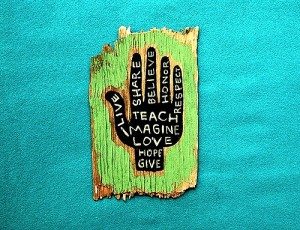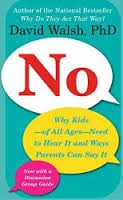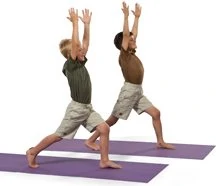When I was a young teacher, I was given some good advice by a mentor:
Start off the year firm. You can always loosen up. But if you start too loose, you will have a hard time getting the classroom under control later.
It took some practice to become very precise and structured as a teacher. My nature isn’t particularly firm. But I did learn the art of creating constructive boundaries.

The same is true for parenting. If parenting starts with structure and good boundaries, the teen years are much easier! We all know that teens challenge the rules. If those rules have been loose and parents then try to tighten them on a 13-year old, the result is quite often drama and turmoil for all concerned.
Erin Walsh sums up the situation quite nicely in a post over on the Mind Positive Parenting blog:
While permissive parenting (anything goes) can be the tempting path of least resistance it tends to leave everyone dysregulated in the long run. It is our kids job to push against the limits, it is our job to set them. If we don’t do it, how will they ever learn to say no to themselves. The opposite of permissive, authoritarian parenting (my way or the highway), isn’t very effective either. While striking fear in our kids may get them to comply, that isn’t the goal. The goal is self-regulation. [emphasis added]
Boundaries Are Loving
Remember Fraulein Maria singing on her way to the Von Trapp estate?: “Somehow I will impress them. I will be firm but kind!” That’s the trick of positive boundary-setting – to be firm but kind.
Boundaries are not barriers. Boundaries are loving. They’re not meant to restrict or keep out. Rather, they create a space in which to thrive.
To appreciate this, think of a negative example – say, that college class you had in which the professor let students to take over or who did nothing to stop side-talk and other distractions. Pretty frustrating, wasn’t it? It felt like the professor wasn’t even in control. It might have felt like they just didn’t care.
Setting limits and expectations is an expression of care. With young children especially, it prompts them to work toward that goal of self-regulation and control.
Sample Approaches to Nurturing Self-Control
I remember one particular class that really prompted me to pull out my inner warrior. I had to be very firm. I set strong boundaries, and I kept them. And boy, did they dislike me for it! They thought I was so mean!
So to help them understand why I was doing what I was doing, I wrote on the board: “The more control you have, the more freedom you will experience.” And they got it. Not long after, I was able to loosen up and have fun with them in class.
There are a number of activities we use in Yoga Calm to help kids come to understand what “wild” and “controlled” feel like. As they do, they move an important step closer to being able to self-regulate.
For instance, in Wild and Calm, we start with the kids squatted down. Then, as you beat a drum or play lively music, encourage them to move and “release” their wildness (of course, without touching anyone or hitting anything). When the drum or music stops, they can freeze, squat down again, or come into Child pose. This activity provides an opportunity to express wildness and release emotions from the body in a safe, contained environment, and then to be able to get oneself back under control. It’s especially helpful when adults play this game along with the children. We teach lots of these activities, that honor and channel kid’s energy in healthy ways, in our Boys & Coyotes Course and Jedi Training kid’s classes.
Another useful tool is storytelling. Remember a time when you experienced wildness. Perhaps you hiked a wilderness trail, ran through a summer rainstorm, or swam in a wild river. Share this story with your class or child. This type of narrative or strategic storytelling provides an opportunity to develop language around wildness and big emotions. This opens up a dialogue with children, and teaching can occur within the context of the story. It also lets the child know that you value wildness in yourself, the world, and your child.
Such activities help support the kind of positive self-control kids need to learn – a self-control that’s not about suppressing behaviors or feelings. It’s about embracing both and learning what’s appropriate when.

Image by denise carbonell, via Flickr





